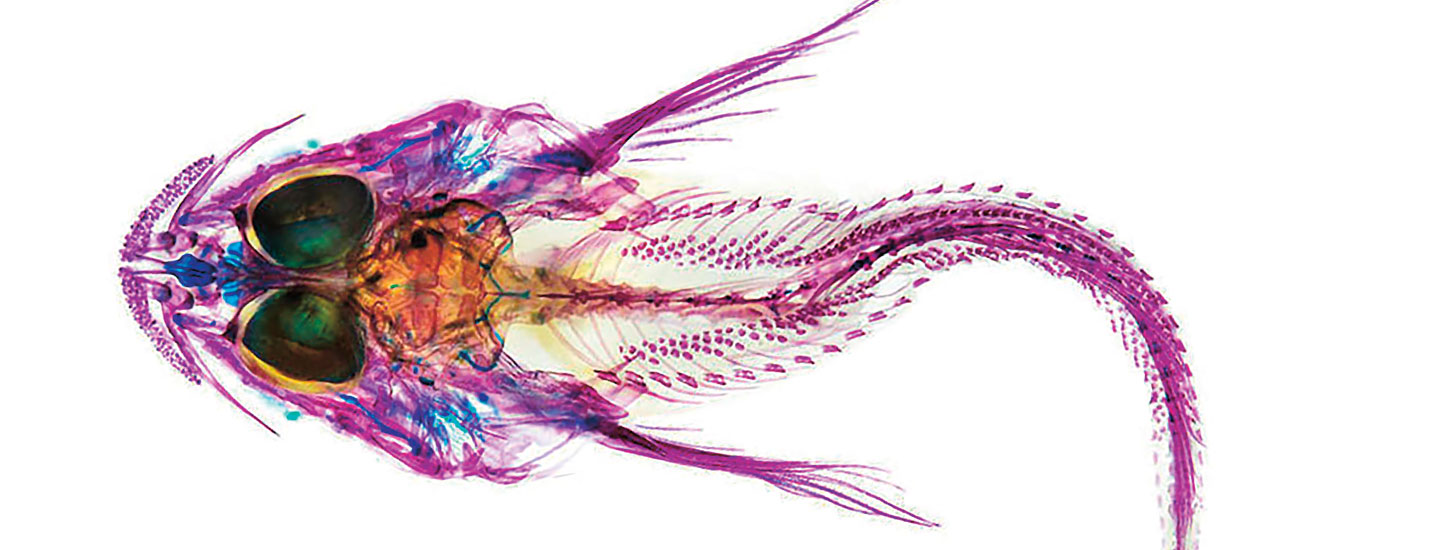Courtesy of Kathy Ballard
Adam Summers
Adam Summers is a marine biologist at the University of Washington. As part of his job, he investigates questions about sea creatures, like: How can some fish attach to rocks or burrow in the sand? What can armored fish teach us about protecting humans?
To answer those questions, scientists need to understand the physical structures of fish. That’s why for the past three decades, Summers has been creating 3-D images of fish skeletons.
To make them, he uses a machine called a CT scanner (see Inside a CT Scanner, below). Summers posts the images online for researchers to study.
Summers has also turned fish skeleton images into vivid works of art. For these pictures, he uses a different process that involves staining the fish’s bones with colorful dyes and photographing them against a bright light.
Summers recently spoke with SuperScience about his fish-scanning process.
Adam Summers a marine biologist. He works at the University of Washington. Summers investigates questions about sea creatures. One thing he wants to learn is how some fish attach to rocks. He wants to learn how other fish burrow in the sand. He also wants to find out what armored fish can teach us about protecting people.
How can Summers answer those questions? He needs to know more about fish bodies. That’s why he’s been making 3-D images of fish skeletons. He’s done this for the past 30 years. He makes the images using a machine called a CT scanner (see Inside a CT Scanner, below). Summers posts the images online. Other scientists can study them.
Summers has done something else with fish skeleton images. He’s turned them into art. To make them, he stains the fish’s bones with colorful dyes. Then he photographs them.
Summers recently spoke with SuperScience. He talked about his fish-scanning process.

